The post Specialty Sourdough Pizza Coming to Oceanside appeared first on San Diego Magazine.
]]>When he moved to Portland, O’Connor first got into sourdough pizza a decade ago. “I would eat a slice of it, and then I would feel fine—like I wouldn’t have that heavy gut that you typically get with pizza,” he explains. It led him to launch Boxcar, a vegan pizza shop offering gluten-free and alternative diet options. “It just seems like a lot of people are sort of getting more in tune with their nutrition,” he says.
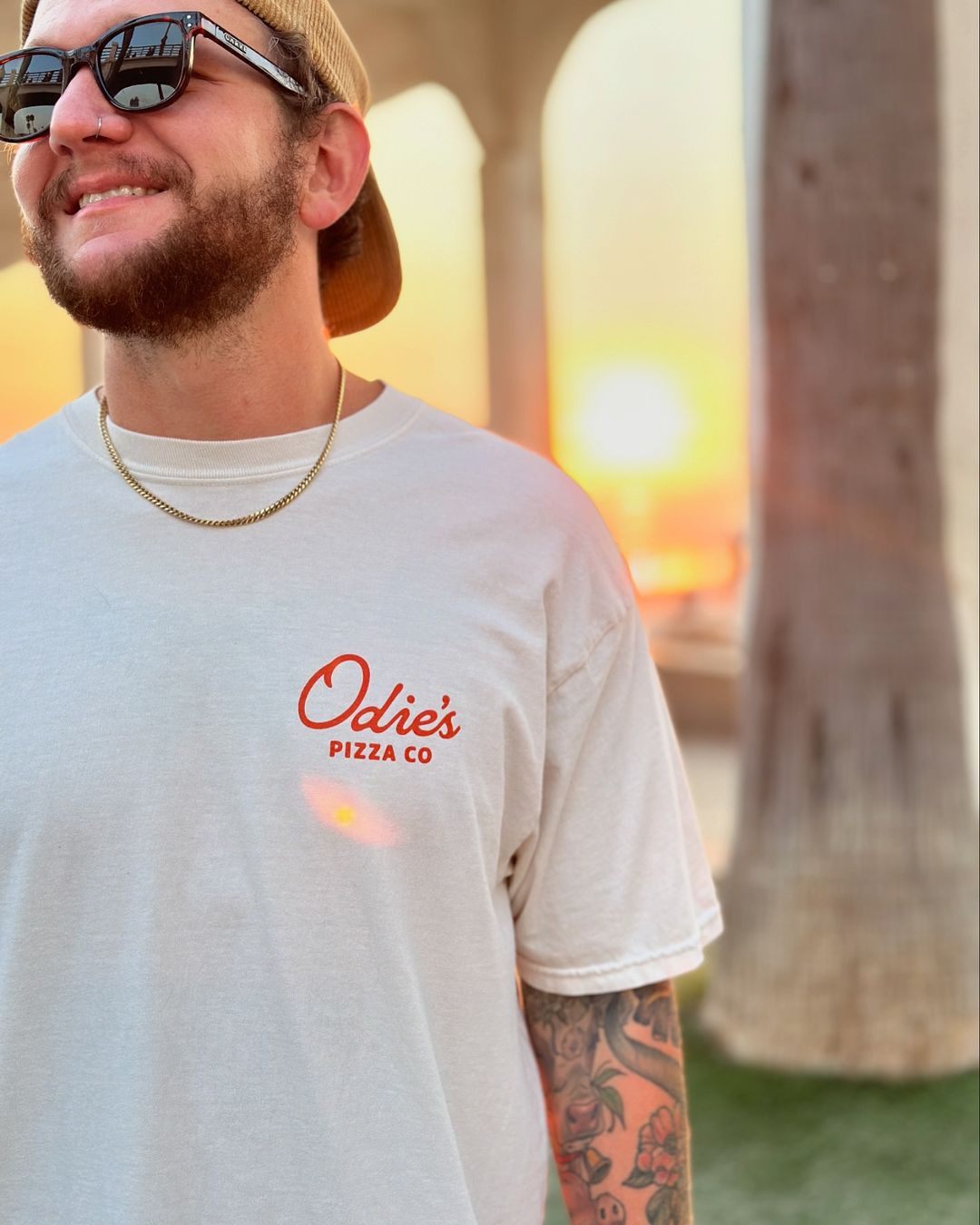
Odie O’Connor
As one of the oldest forms of bread making, O’Connor says sourdough can taste better and be better for digestion. He didn’t see a similar pizza shop in San Diego and returned to his hometown earlier this year to start building Odie’s. “The idea was to bring something that wasn’t in San Diego and make it available for everyone, to be inclusive of all diets, or as many as we can,” he says. “I turned into a total dough nerd.”
Odie’s dough will go through a 48-hour-long cold fermentation for a fuller flavor, and they’ll also offer gluten-free and vegan options as well. “Our normal pies are going to be 16” New York-style pies, and also 16×16” grandma-style pies, which is like Sicilian,” says O’Connor. They’ll also serve wings, salads, milkshakes, soft serve, and local craft beer.
Opening in North County was a no-brainer, he says. “I’ve always loved Oceanside. I grew up surfing the pier,” he says. “It just feels like Oceanside is really booming right now, and there’s room to bring things to it… we’re super excited to get it going.”
Odie’s Pizza is slated to launch in January and will be open seven days a week from 11 am to 9 am.
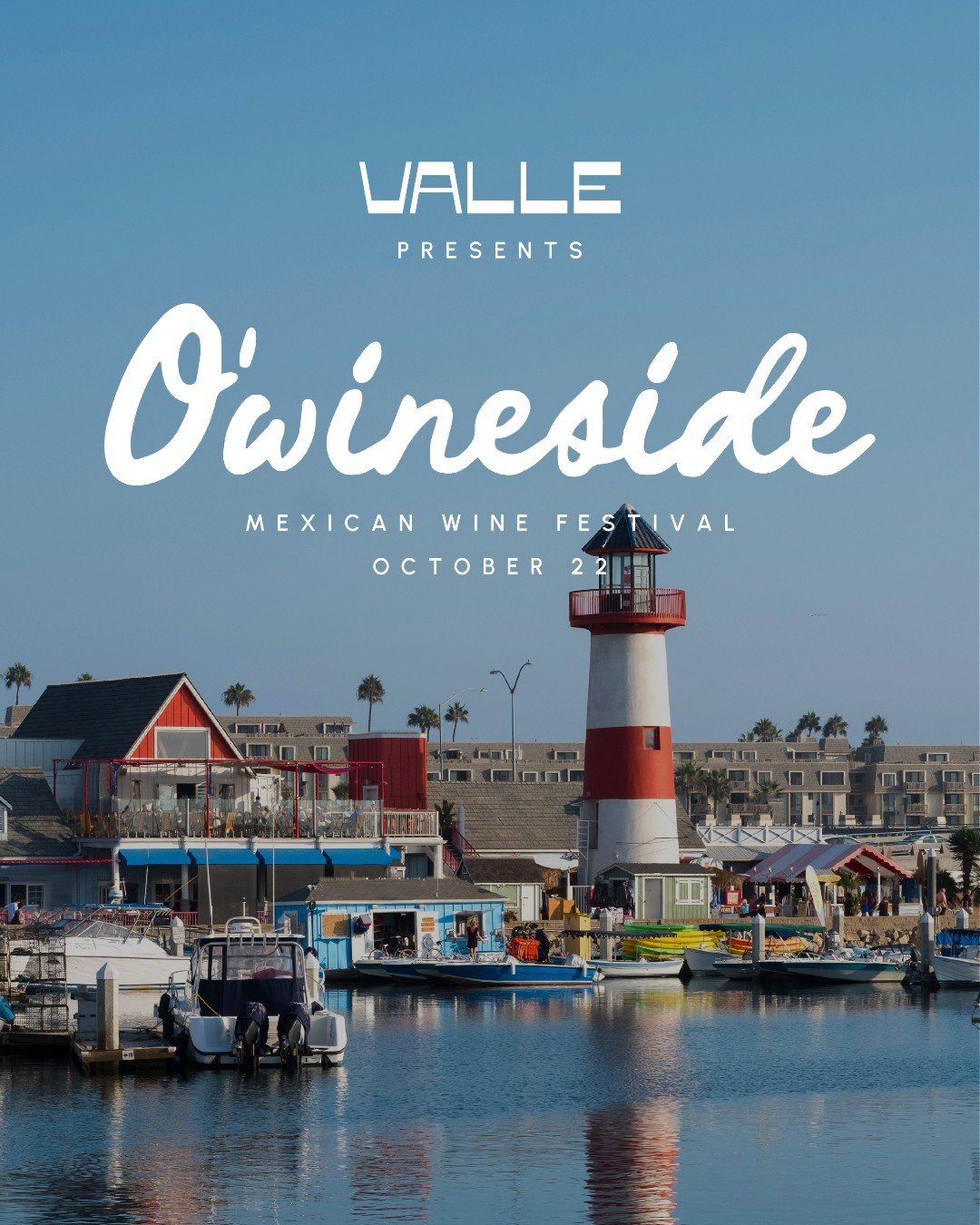
San Diego Restaurant News & Upcoming Food Events
Inaugural O’wineside Mexican Wine Festival Coming in October
Exquisite as the Valle de Guadalupe is, there’s more to Mexican wine than that sole region. The first O’wineside Mexican Wine Festival will feature wine from 25+ different wineries across seven different Mexican states, starting at 1 p.m. and culminating at a wine-pairing dinner curated by chef Roberto Alcocer of Michelin-starred Valle and partners Baja chefs Miguel Bahena (Madre in Ensenada) and Omar Valenzuela (AVIA in Mexicali, Célida Café in Ensenada). Tickets for the festival are available here; tickets for the wine dinner are sold separately here.
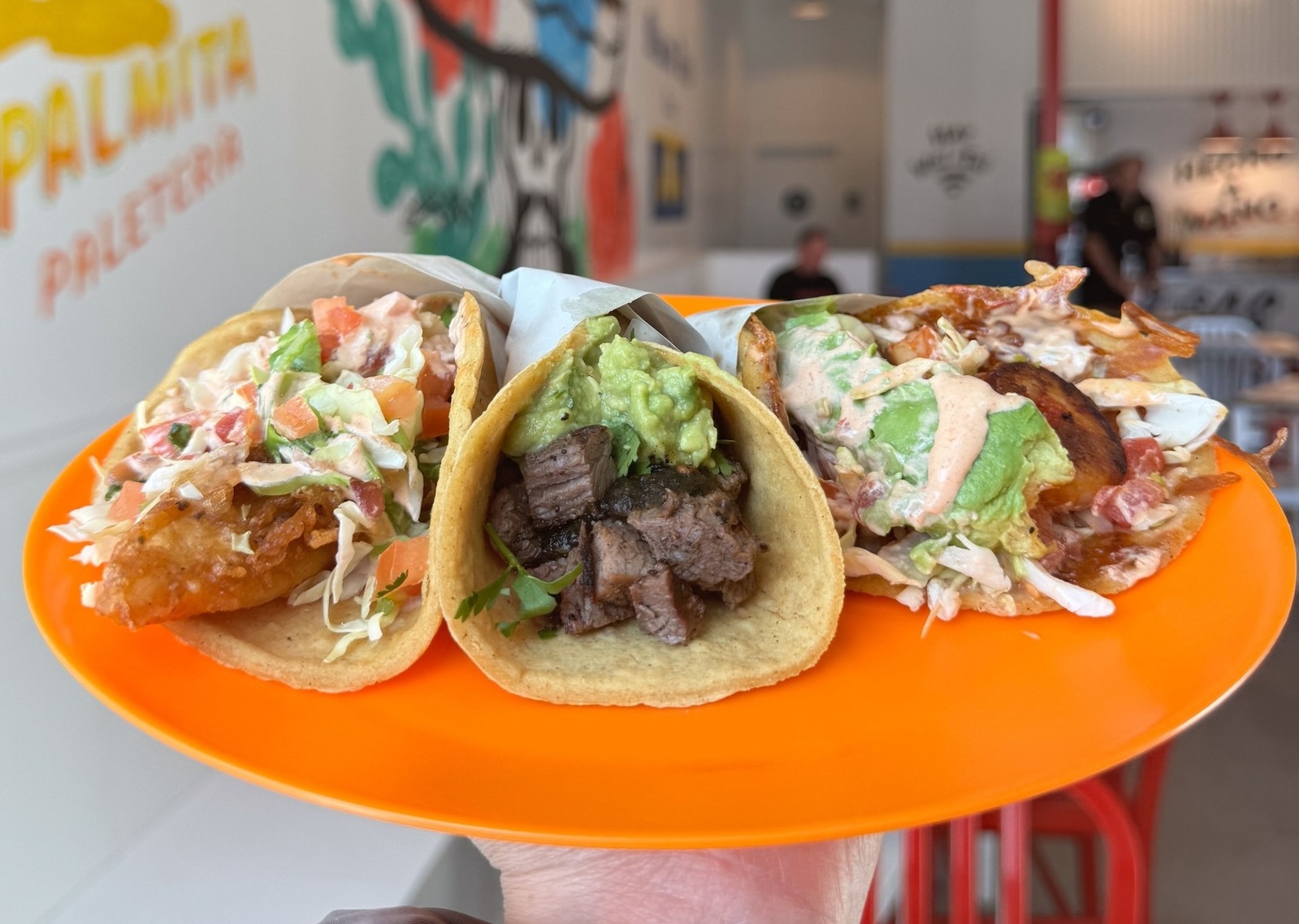
Beth’s Bites
- Not to toot my own horn (okay, it’s precisely to toot my own horn), but I’m co-hosting a cider and food pairing event on Thursday, October 10, at the San Diego Mission Bay Resort with Bivouac founder Lara Worm and chef Roy Hendrickson. Tickets are available here, including four courses paired with Bivouac ciders and a discussion about San Diego’s growing cider scene. Hope to see you there!
- The Taco Stand continues its expansion. A new location will open at 1722 S. Coast Highway in Oceanside early next year. It’ll be the 14th location for the Showa Hospitality Group and the 10th in California.
- Pesto Italian Craft Kitchen College is out, and Joyee’s Dumpling House is in at 6011 El Cajon Blvd. in College Area. As much as I love lasagna, I love dumplings even more, so this is very exciting to me, personally.
Have breaking news, exciting scoops, or great stories about new San Diego restaurants or the city’s food scene? Send your pitches to [email protected].
The post Specialty Sourdough Pizza Coming to Oceanside appeared first on San Diego Magazine.
]]>The post Fishermen’s Market of North County Now Open Sundays appeared first on San Diego Magazine.
]]>Just don’t call it a fish market. “We’re a fishermen’s market,” says founder Travis Tielens. “Much like a farmer’s market, but with all the commercial fishermen taking their catch directly off their boats and into the people’s hands,” he says. No wholesalers, distributors, or other middlemen are taking an extra cut. Just fresh fish at good prices, Tielens promises.
“You would go to some of these high-end fish markets and they’ve got tuna priced at $36 to $44 a pound. Over here at the market, it’s anywhere from $20 to $25 a pound,” he explains. Plus, he adds, you can’t get fish any fresher in many places—often, the catches are still alive. “As far as freshness, it’s unmatched.”
Fishermen’s Market of North County launched the weekly market on April 28, and it’s only grown since then. “The word’s really starting to get out there, so it’s been consistently busy,” says Tielens. It’s local fishermen’s busiest season right now, and he says they have plenty of variety every week, from tuna to halibut, yellowtail, oysters, scallops, sea urchins, spot prawns, and especially sardines and mackerel.
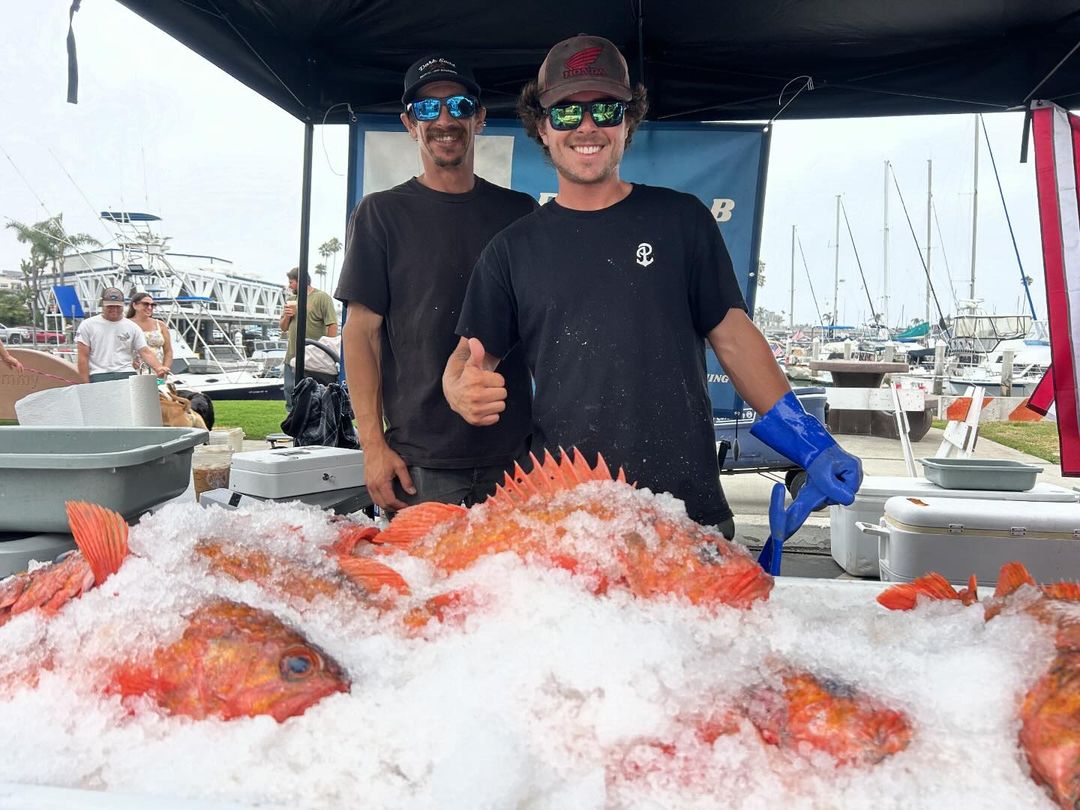
According to Tielens, most fish markets don’t even carry them because they’re so perishable, but those last two are unique to the market. But as more and more people discover the health benefits of those species, he’s seen demand significantly rise. To ensure safety and quality, he says the market’s board has a dedicated inspector to check fishermen’s tickets to double check everything has been caught within 72 hours. “We’ve got very strict rules,” he explains. “We’re setting ourselves apart from the rest by being very diligent with the freshness.”
He estimates there are usually around eight to 12 commercial fishermen selling their fresh catches every week, rain or shine, from 8 a.m. to 2 p.m. in the parking lot next to Joe’s Crab Shack. Most vendors are longtime locals, including himself. Tielens says that while it took a few years to organize and get the proper permits formally, he wants to keep the market small. “We’ve always kept it a tight-knit group, so we work well together,” he says. “We’re just keeping it local, keeping it fresh, and not getting sidetracked from that.”
Now that the market is running, Tielens says they plan to introduce a recurring cooking demonstration series with a different local chef every month. The first is this Sunday, July 21, from 11 a.m. to 1 p.m. with chef Davin Waite of Wrench & Rodent and The Plot, and it’s completely free to attend. Plus, “We’re gonna have free samples to hand out to people,” he adds. “It’s gonna be a cool little event.”
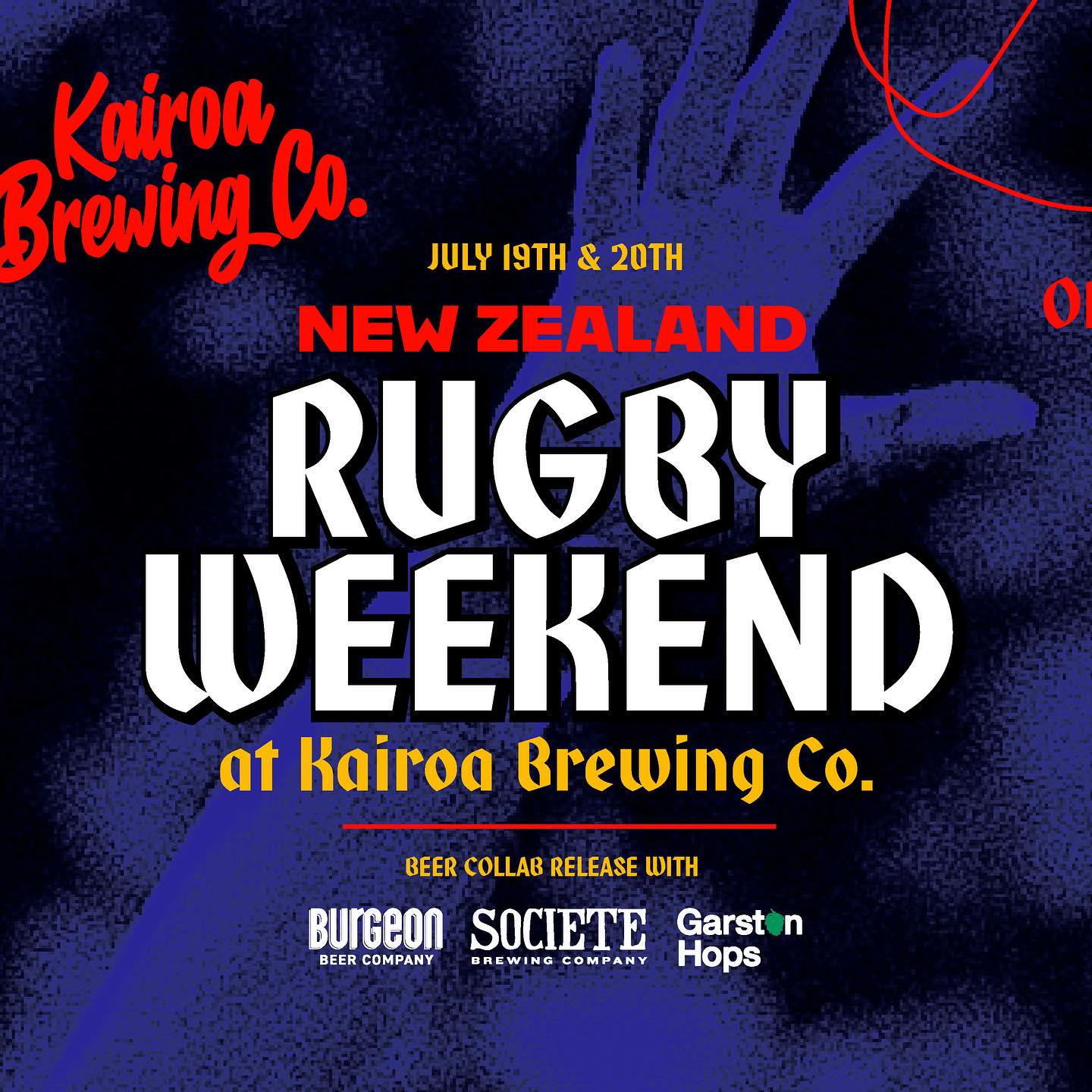
San Diego Restaurant News & Food Events
Watch Rugby & Drink Beer at Kairoa Brewing Company This Friday
If you didn’t manage to snag a ticket to the New Zealand All Blacks vs. Fiji Rugby at Snapdragon Stadium this Friday, you can still get rowdy for rugby at Kairoa Brewing Company. The New Zealand-inspired brewpub’s “Bring The RUCKus” beer release party kicks off at 2 p.m., and the game starts at 7:30 p.m. Plus, reps from Garston Hops will be on hand until 6 p.m. to chat about the hops used for Kairoa’s latest collaboration beer with Societe Brewing and Burgeon Beer Company.
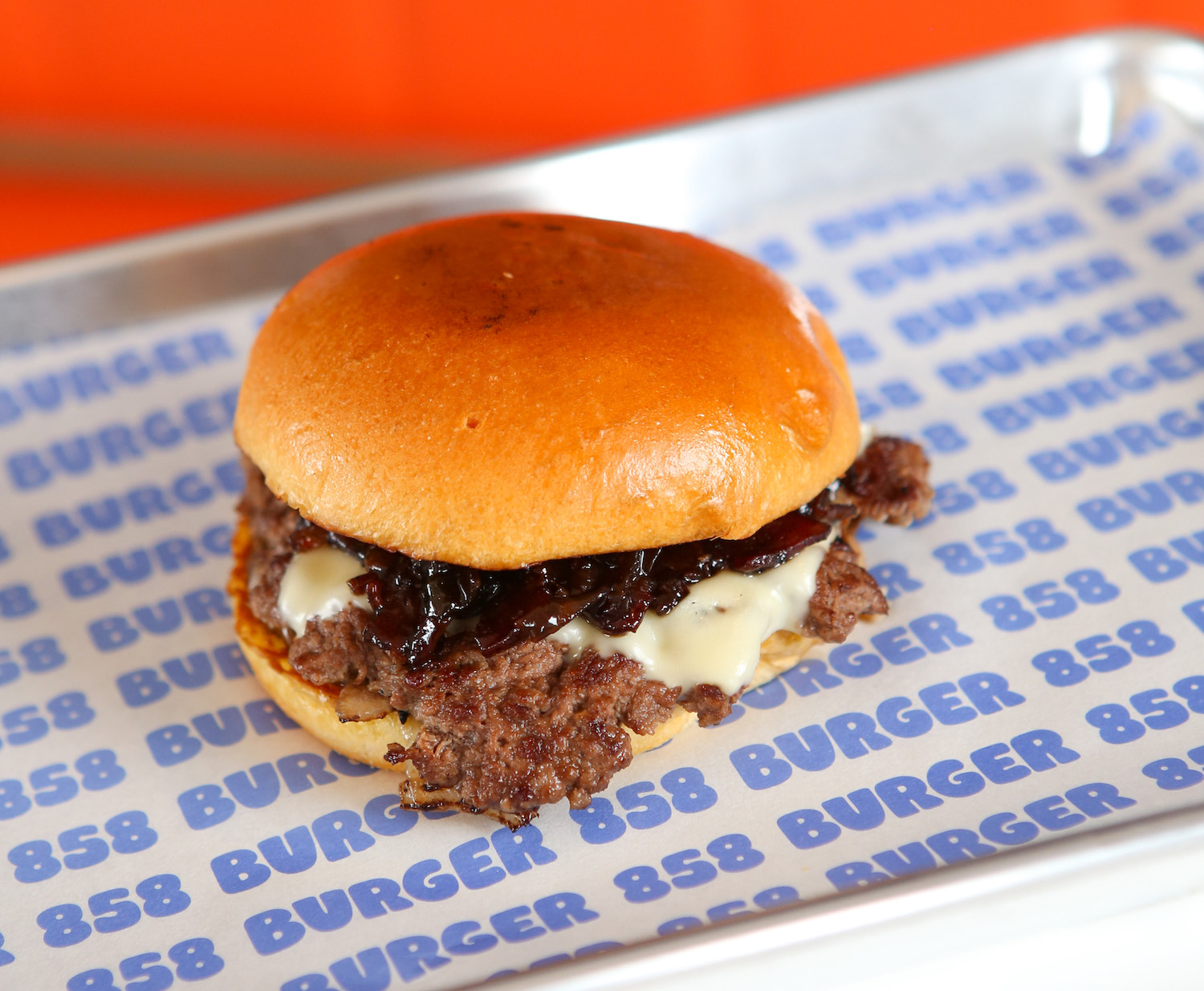
Beth’s Bites
- 858 Burger is officially open in La Jolla in the old Classic Burger spot. I’ve got a hankering to try the signature 858 burger with bacon jam and dirty fries… maybe afterward, I’ll walk it off on a stroll to the Cove. (Look, but don’t touch or tease the sea lions, for Pete’s sake!)
- Everyone’s wallets feel the pinch these days, so I’m always looking for a good deal. Luckily, The Amalfi Llama at Westfield UTC just launched a prix-fixe lunch menu for $35 and “Summer Friday” specials for a limited time. Check out their menu here.
- Michelin madness is in full swing, and our local dining scene is no exception. La Jolla’s Ambrogio by Acquerello got a nod in the latest update, which may signal a starry future. The official 2024 Michelin Guide California ceremony will take place on August 5, so good luck to the whole team!
Have breaking news, exciting scoops, or great stories about new San Diego restaurants or the city’s food scene? Send your pitches to [email protected].
The post Fishermen’s Market of North County Now Open Sundays appeared first on San Diego Magazine.
]]>The post 10 Years of Crafting Artisan Spearguns in Oceanside appeared first on San Diego Magazine.
]]>Wells grew up in San Diego and, in his youth, spent a few years at his grandparents’ Lakeside ranch, where both his father and grandfather were woodworkers. Wells remembers endless hours “in the sawdust” with his predecessors, absorbing the craft from afar. Wells’ grandfather even made spearguns, unbeknownst to Wells until he picked up the trade. “It’s unreal to see how it’s come kind of full circle,” he says.
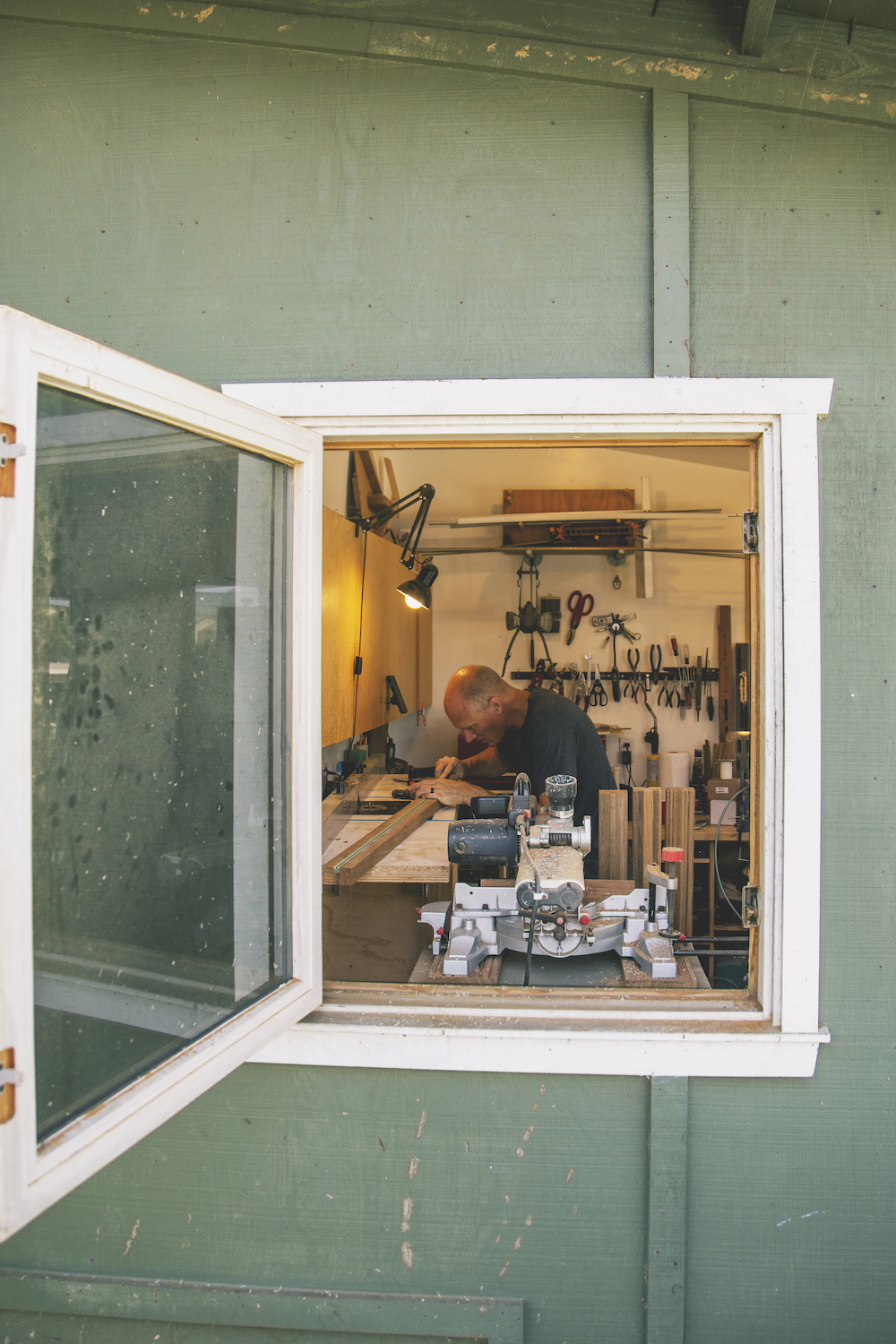
Nate Wells in his backyard Oceanside workshop.
After all, it wasn’t Wells’ family that got him into the sport. Instead, a 2014 fishing trip on a neighbor’s boat piqued his interest. “He took me offshore, and I got hooked just watching him catch yellowtail and tuna and dorado and all these things,” Wells recalls. “I was like, ‘I didn’t even know we had all this kind of stuff right here.’”
Pulling the trigger himself, he soon found, was “addicting.”
The same neighbor commissioned Wells’ first custom speargun. Wells supplemented his knowledge of woodworking with info from myriad YouTube videos and online forums.

“As you progress as an artist or craftsman, you start to see, ‘Oh, this is pretty rudimentary. This is pretty basic, you know? Let’s expand,’” he says. “With every batch of guns, I just keep improving.”
Ten years later, Wells is still fine-tuning his work under the eponymous moniker Wells Spearguns, but he’s got his basic materials down to a science. “I strictly use Burmese teak because of how well it holds up,” he says. It’s something people [have used] on boats forever, right? So I use it for the longevity of it—and the beauty of it, too.” Florida-based company Neptonics supplies the parts required to build the gun’s inner mechanisms.
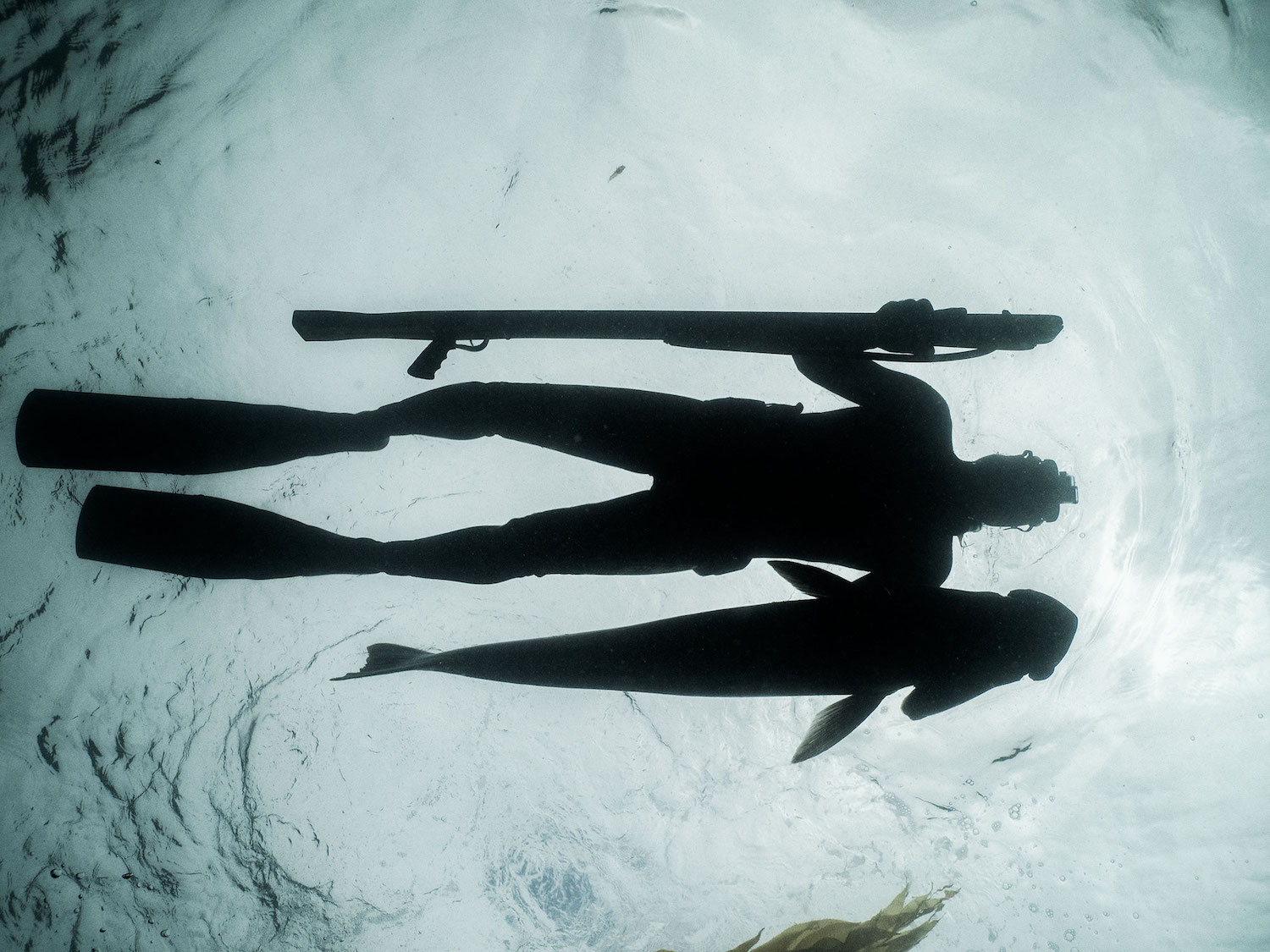
Still, no two guns are quite the same. “I come from a surfing background, and my favorite thing was getting a custom surfboard. That’s like the dream, right?” Wells says. “That’s kind of what I tried to do with the guns.” Buyers can choose custom epoxy colors and engraving, so their device is as beautiful as it is functional.
“I love connecting with people through this, helping them find exactly what they want in this process,” Wells says. “There’s just something about all the little layers of spearfishing, you know, from building your own gear to diving with people and then bringing that catch home to friends and family.”
The post 10 Years of Crafting Artisan Spearguns in Oceanside appeared first on San Diego Magazine.
]]>The post Afterburner Breaks the Sound Barrier at Techne Art Center appeared first on San Diego Magazine.
]]>“[The exhibition is like] pilots testing the sound barrier of Mach 1 […] pushing into the unknown,” says artist Jason Clay Lewis. The show is a feast of sensory engagement, featuring sculptures that inspire touch fantasies, paintings that creep into the third dimension, and fabric pieces that wrap the viewer’s experience in silk and netting. Within every work, details anticipate their moment of reveal.
Although it is a large group show, artists do not have to fight for their limelight. Each piece feels perfectly positioned, the space curated into zones of understanding and energy that create room for thoughtful and purposeful experience.
The show is, in many ways, similar to the gallery that hosts it. Techne Art Center is quickly making a name for itself in the contemporary art world. The space expands inwardly, offering art like Mary Poppins pulling magic out of her capacious bag. It includes many smaller rooms, which offer artists the opportunity to install expansive work and create a treasure-hunt experience for viewers. Around every turn, new art greets you and pulls you in.
In one of those rooms, an installation piece by Tim Murdoch turns the space into a surreal echo of local ecology; it is quiet, mysterious, and meditative. Murdoch’s work not only transforms the room, it also showcases his masterful ability to transform the materials he is using. A simple but powerful color palette and attention to balance and shadows transfigure familiar wood into something entirely new. “I really like spaces like this because there’s freedom to explore new things and show work that is challenging,” Murdoch says.
Prominent San Diego ceramic artist Sasha Koozel Reibstein has taken up the same call. Her work Antivenom stands tall in the main space, drawing attention with offshooting, open-mouthed snake heads; anthropomorphic petals; unexpected textures; and loud colors.
Murdoch and Reibstein’s pieces resonate so strongly at Techne because it is surrounded by work from artists who are all pushing towards their own version of Mach 1. As a whole, the show boldly requests the viewer set aside everything they know and expect from certain materials. In exchange, it offers radioactive painted ceramics, massive circuit boards woven from fabric, and paintings that deal purely in deception and distortion.
Artist and Techne founder Charles Thomas says his goal for opening his space was to “show work that is so good, people have to come out.”
In Afterburner, he has succeeded. His careful curatorial approach has produced an imperative body of work.
Afterburner opens at Techne Art Center (1609 Ord Way, Oceanside, CA 92056) on Saturday, April 27, from 5 to 8 p.m.
The post Afterburner Breaks the Sound Barrier at Techne Art Center appeared first on San Diego Magazine.
]]>Oceanside went from sleeping
in a parking lot to becoming
one of the nation's biggest personalities
The post Who is Jordan Howlett When the Camera is Off? appeared first on San Diego Magazine.
]]>In his instantly recognizable minimalist videos, the 27-year-old Oceanside local (known in feeds as @jordan_the_stallion8) beckons his viewers near. He then dons his reading glasses, opens his famous leather-bound recipe book, and becomes a type of Gen Z Robin Hood, sharing the classified methods behind popular fast food items with his more than 29 million followers across TikTok, Instagram, and YouTube. Want to know how to make Taco Bell’s Baja Blast or Olive Garden’s alfredo sauce? Howlett is your huckleberry.
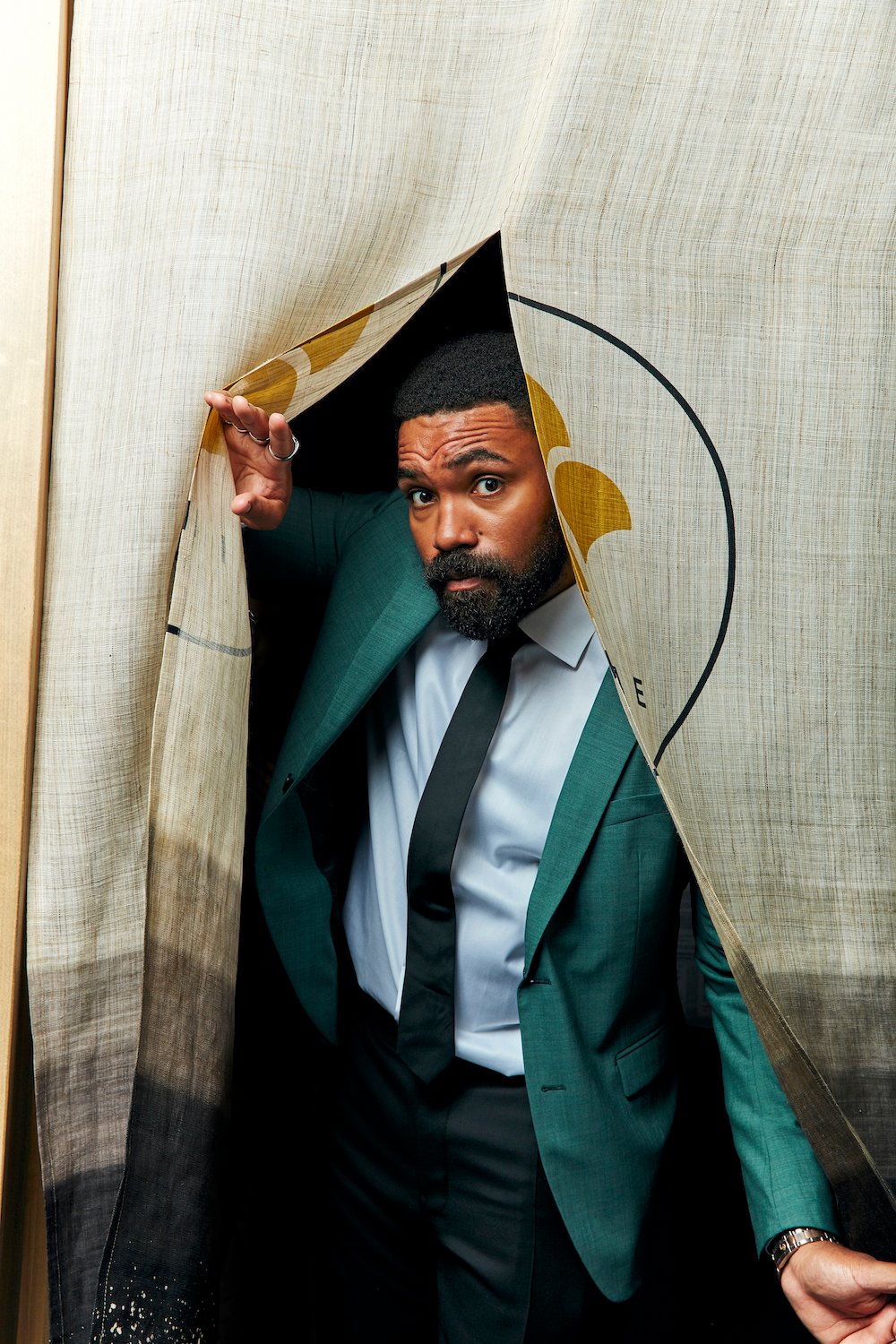
As founder of what he calls the Fast Food Secrets Club, Howlett has become one of the most popular raconteurs on the internet, spouting wisdom and hot takes with self-effacing humor and an infectious love of food (while bringing icons like Kevin Hart and Method Man in for cameos). Yet, despite speaking to more followers on TikTok (12M+) than Jimmy Fallon and more on Instagram (8M+) than Chris Rock, his path to bonafide internet stardom remains mysterious. So how did he get here? What’s his secret?
Meeting Howlett and speaking to those who know him best, a picture emerges of an introverted kid with a unique fire in his belly, carrying the weight of growing up in a family struggling to stay afloat. “We definitely were strapped for money all the time, and I knew it,” Howlett says. “I was aware of it very early.”
Born in LA County, Howlett spent his early childhood in the high desert city of Victorville, CA, where his dad worked jobs at the nearby federal prison and at Best Buy, among other places. When his parents got an offer to help start a new branch of a mailbox installation company in San Diego, the family moved to Oceanside.
Howlett attended a small public school before transferring to Oceanside High sophomore year in order to have access to sports. This, his friends say, is when the early whispers of Howlett’s potential for big things first could be heard. He seemed to know who he was far earlier than most teenagers, carrying himself with the maturity of someone much wiser than the rest of his peers. But that doesn’t mean high school was easy. Quite the opposite, in fact.
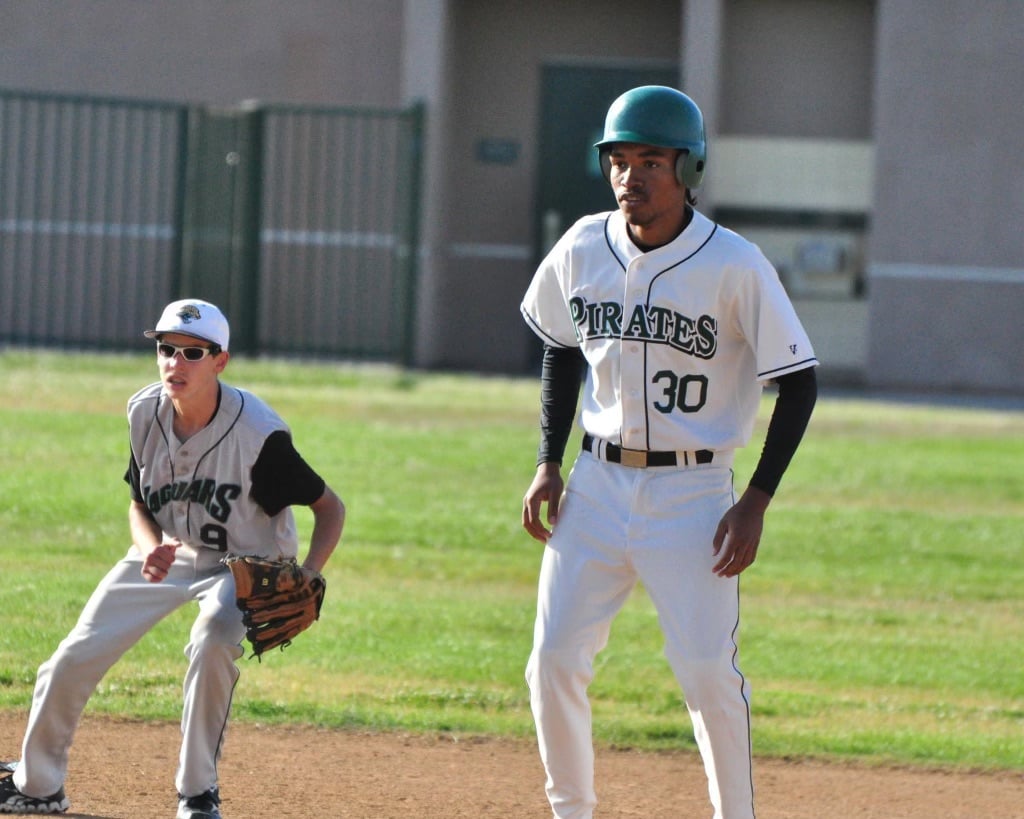
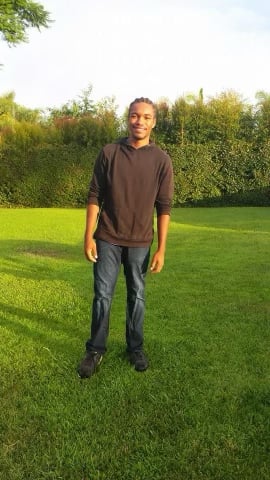
“My first impression with Jordan was I saw this tall, awkward guy with a very big, nappy afro,” says Howlett’s longtime friend Saúl Sandoval Estrada, whom Howlett met soon after transferring. “He had this faded old zip-up hoodie, oversized shorts, really big feet, and mismatched socks that went up to his calves. He was polite and he was humble, but because he looked poor, people made fun of him and would pick on him. A lot.”
“All the girls rejected him,” Estrada adds. “All of them. I mean, in high school you’re not looking for a mature guy with good morals and values and ethics.”
Howlett acknowledges it was tough.
“Every time I tried to talk to girls— or talk to anybody—it was awkward,” he says. “I would always want to give them the utmost kindness, but I was not smooth in the slightest.”
Despite his setbacks, when Howlett found baseball, he didn’t take awkward for an answer. Having never played sports before, he worked maniacally hard to catch up to the kids who’d been playing tee ball since preschool. In a matter of months, Howlett was saying he wanted to play Division 1 ball, with hopes of making it to the big leagues.
“People didn’t like that,” Estrada says. “So they would tell him, ‘You’re not going to college. Look how goofy you are. Look how uncoordinated you are.’”
But Howlett’s ego was unphased.
“When you get coaches in high regard telling you this is not achievable, you have to be half delusional, half mature enough to be like, ‘Hey, I’m gonna do this because I need to see it for myself,’” Howlett says.
He worked out before school at 5 a.m., did his homework at lunch, and attended freshman, JV, and varsity practices in the evenings. Then, he’d be in the batting cages with Estrada into the night, trying to connect with his dream.
After stints in community college, Howlett transferred to UC Riverside in hopes of playing baseball as a walk-on. Unable to afford more than a partial first tuition payment, he was sleeping in his ’97 Chevy Suburban near the field while attending classes and going through tryouts, aiming to make the team and get on scholarship.
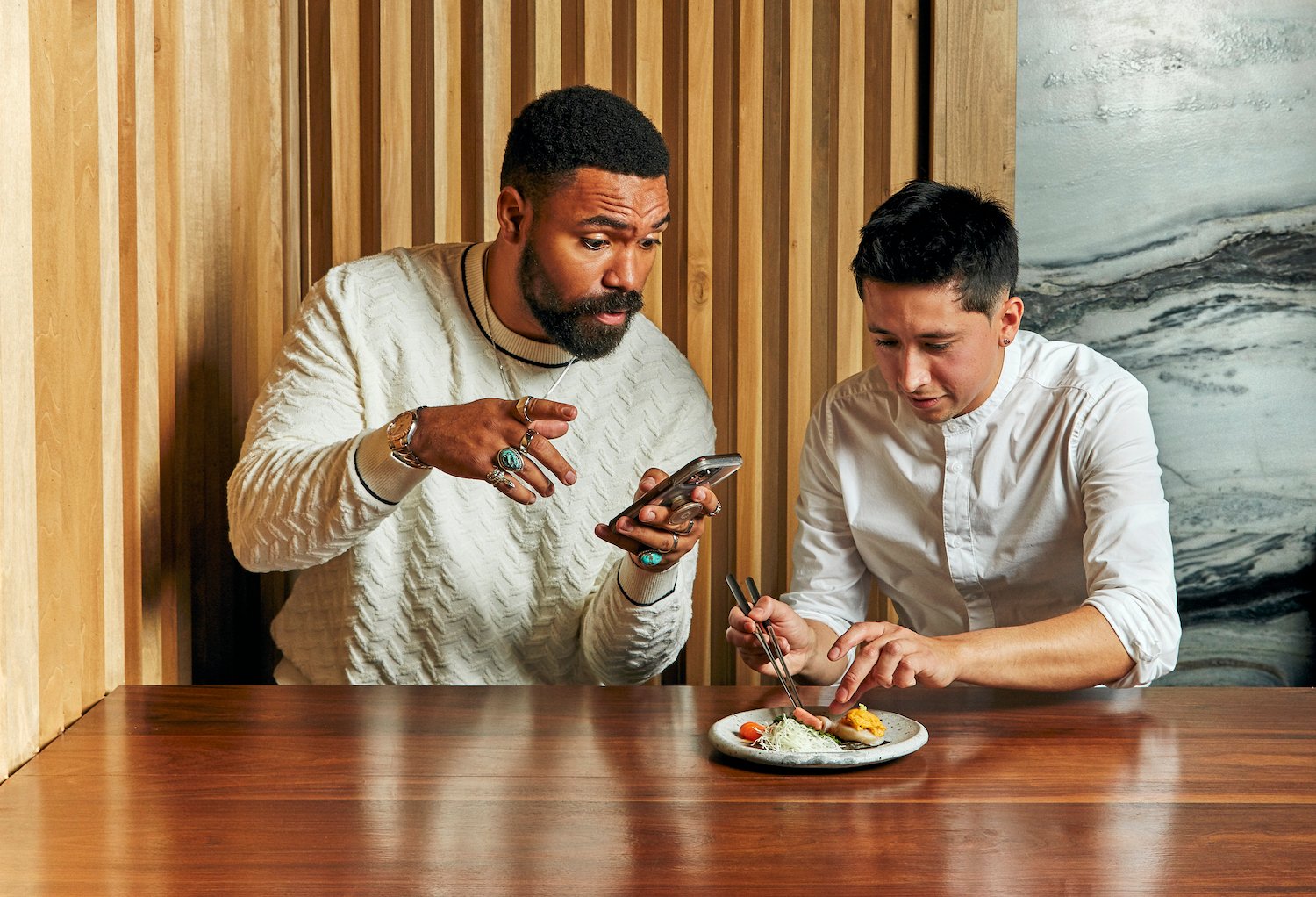
Known for stealing secrets, Howlett plays along with sushi chef Andretty Lucatero at Kinme Omakase.
“I’m sleeping in my car, so I’m not getting any sleep. I have no money for food, so I’m not eating much. And I’m stressed about this walk-on,” Howlett explains. “I was so exhausted. I was sleeping in classes, and I failed my first test. I was scared. And the same day I failed that test, the financial aid office told me I owed $3,000 because the second payment was due way quicker than I thought. It was a lot of pressure that I’d never experienced before.”
But the gamble paid off when the coaches extended him a 10-day contract to prove himself.
“Man, I didn’t leave that field,” Howlett says. “Six a.m. lifts, I’m there at 4 a.m. I’m making sure I’m the last to leave. And I made the team.”
He got the scholarship.
“The dude was horrible, but he worked his ass off,” says Jeremiah Luster, an Oceanside-based scout for the Arizona Diamondbacks who witnessed Howlett’s development. “I have never seen a kid work that hard, and I’ve been in baseball for 16 years.”
But then came the pandemic. Howlett’s eligibility expired due to a technicality with his credits from community college, and his baseball dreams were forced into early retirement.
“I didn’t know my last time in the uniform was my last time in the uniform,” he says. “So there was a lot of emotion. It was a lot to process.”
He graduated from UC Riverside in 2020 with degrees in African American studies and kinesiology, but he soon found himself back in Oceanside, working a series of low-paying fast food jobs. His older brother, Elijah, had found some success in the early-ish days of TikTok, so like little brothers have done since the dawn of time, Howlett followed his lead.
And once he caught the bug, that same wild drive that had transformed him from a lumbering teenager into a D1 baseball player in record time had him posting handfuls of videos per day. He fed the feeds, and the feeds fed him back. Within a year, he had a million followers on TikTok.
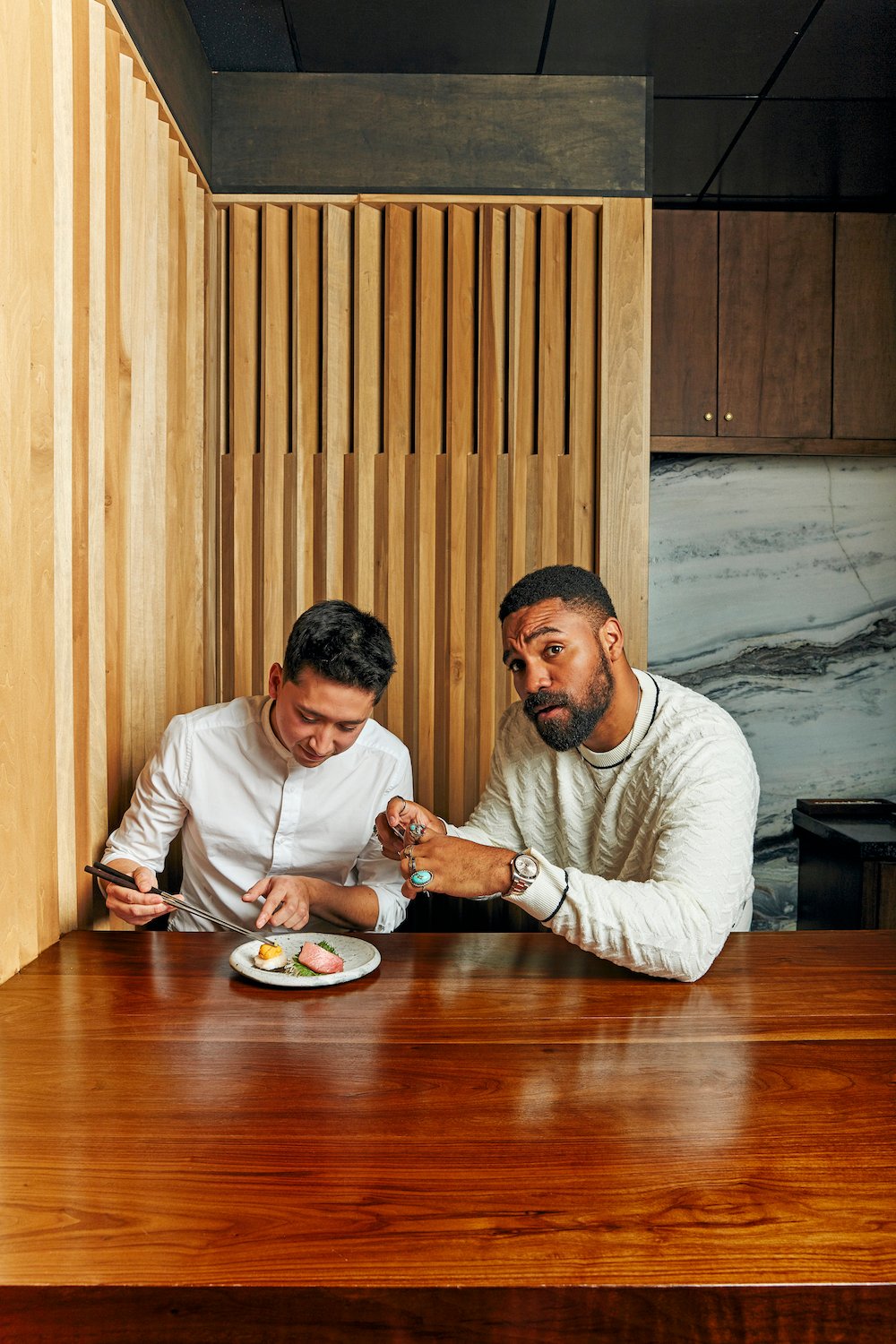
Now, the only thing slowing him down is the human need for sleep. With baseball, his body would run out of gas, but his mind doesn’t. He’s thinking of ideas around the clock, filming and posting videos day and night. And he’s focused on what’s next. Between invites to A-list events, where he’s sometimes approached by celebrity fans, he’s personally involved in the design and fabric selection for the next drop of Fast Food Secrets Club merch and is dreaming of even larger platforms.
“Movies and TV and getting into grander things, it’s always a fun look,” he says. “But at the end of the day, I would not exist without the people who are watching my videos. And I wanna make sure that as we’re growing, it feels like a journey that we are taking together every step of the way.”
With his massive following and these burgeoning Hollywood aspirations, you might think Howlett is living large, but no. He doesn’t even own a car. The bright blue Tesla he drives to our first interview, he rents by the day on an app.
“My family always comes first,” he says. “I let my dad have the car that I had so he could get to work. And, for myself, a car is a big responsibility. I’m just waiting for the right time.”
Financially, Howlett remains a bit of a mystery. Try putting the Jordan Howlett puzzle together and you realize he has pocketed a few pieces. The picture isn’t fully clear. The king of telling secrets seems to keep a few of his own.
His ever-present PR rep asks us to avoid certain topics: religion, politics, his dating life (although he confirms he identifies as straight). And when it comes to money, Howlett remains vague.
“I don’t want to say anything that might give people the idea of, like, this is a benchmark,” he says. “Everybody’s different. So out of respect to all the other content creators, I’m not gonna share [my income].”
As interesting as it might be to know— at least roughly—how much someone with his following actually makes, there’s no set pay schedule for social media stars. Their incomes are based on niche, audience engagement, and how willing they are to turn their feeds into ads.
“When it comes to social media finances, you’ll get sporadic payments in different lapses of time,” Howlett says. “So, it can easily change from ‘I’m very much struggling to get the light bill paid’ to, ‘Okay, now we have emergency funds for if something were to happen.’ Financial responsibility is the number-one thing.”
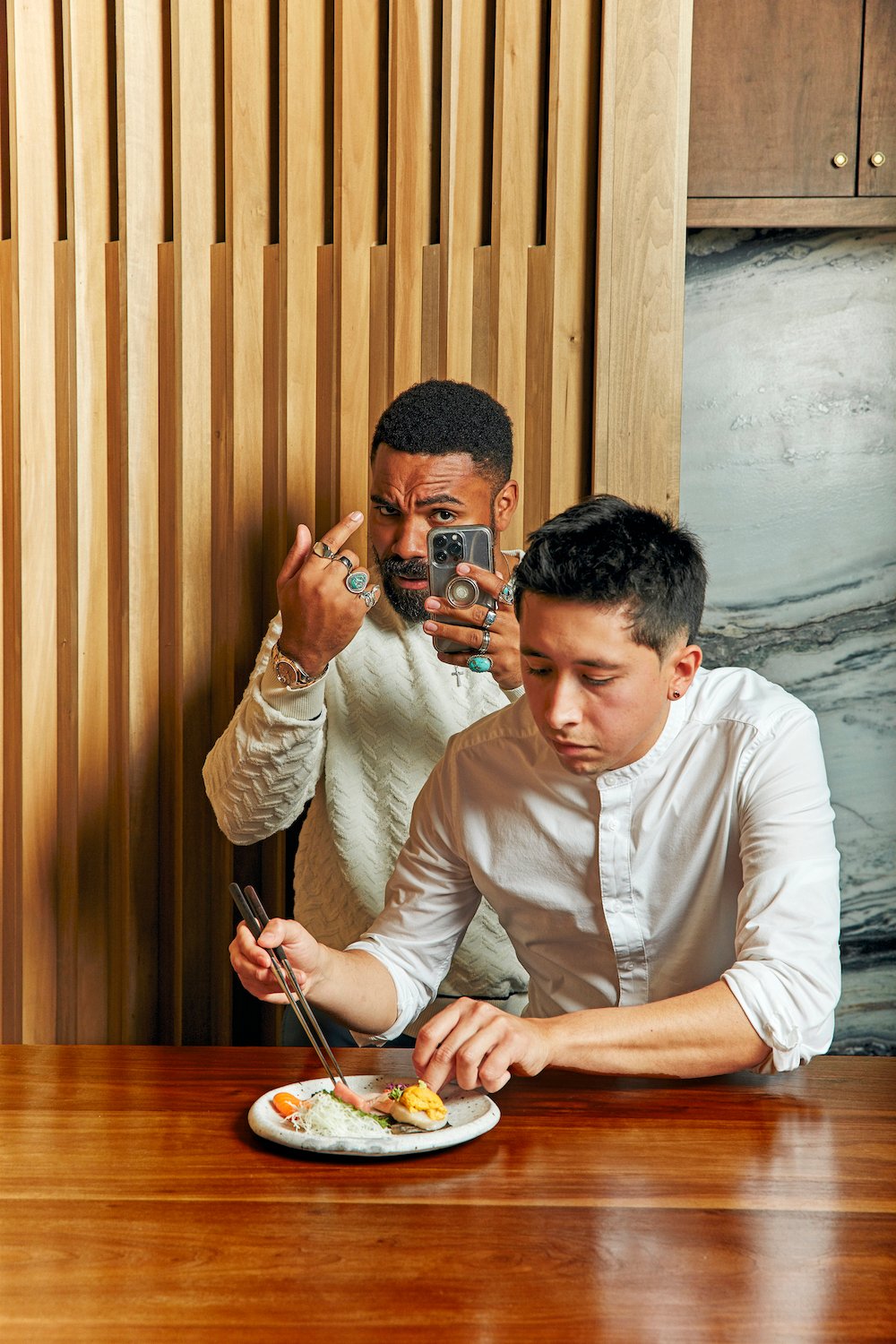
These days, Howlett’s mom works in the office of a landscaping company; his dad is in loss prevention at a grocery store. And Howlett continues filming his videos in the bathroom and kitchen of the rented house he shares with them, Elijah, and their cats.
These videos—which often hit view counts in the tens of millions—check all the boxes for social media success: They’re funny, engaging, and repeatable, and they appeal to base human desires like hunger and never paying full-price. But as his star power and follower counts continue to rise, Howlett remains what he’s always been—humble, polite, and focused.
“He doesn’t put up a front,” Estrada says. “What people see, that’s what they’re going to get.”
Howlett’s friend and manager Michael Berkowitz agrees. “He’s the same guy when the camera is down,” he says. “He can be reclusive when there’s a creative block until he’s out of it, but, really, he values relationships and human interactions. Something really special about Jordan is that wherever we are, he’s going to say hi to the janitor or the person working the door.”
Example: Today, we’re on set. Howlett walks into the photo shoot for this magazine’s cover and starts shaking hands with everyone—a sincere two-handed affair, with his left hand resting gently on top. It’s early in the morning, he’s been in the car for an hour, and he had to find parking, and yet, immediately when he enters, everyone—the art director, the photographer, the stylist, the various location hosts—gets a quiet, “Hi, I’m Jordan, nice to meet you,” with a smile, eye contact, that earnest handshake.
“A lot of people say that I talk in a whisper,” Howlett admits. “I keep to myself. Maybe that could be due to traumas, it could be due to how I grew up, but I enjoy it. It gives me extreme solace to know that when I walk into a room, I give myself the best chance to be approachable to anybody and for someone to feel comfortable having a conversation with me. It’s nice.”
Maybe this is why his videos catch such fire. On an internet that feels faker by the minute—full of algorithms that reward copycats, AI-generated vids, and pseudo-experts in everything from wellness to war—you can easily find anything online… except sincerity. When you’re scrolling recommended feeds full of overly produced vids made to manufacture emotion—be it outrage, lust, or simple envy—Howlett’s videos feel like a break from the noise. And maybe that’s his secret. Now all he has to do is write it down in his leather-bound book.
Photo Shoot Credits
Producer: Mateo Hoke
Art Director: Samantha Lacy
Stylist: Amelia Rodriguez
Photographer: Matt Furman
Location: Kinme Omakase
Clothing: provided by Bloomingdale’s Fashion Valley
Watch: provided by Fourtane Rolex Boutique at Fashion Valley
Rings: provided by OB Antique Mart
The post Who is Jordan Howlett When the Camera is Off? appeared first on San Diego Magazine.
]]>The post Incoming: Swine Wine Bottle Shop + East Wing Lounge appeared first on San Diego Magazine.
]]>
flying-pig-exterior.jpeg
Sure, Oceanside’s food scene is hot now. It’s the epicentre of San Diego’s whoa. But wasn’t always that way. And Flying Pig Pub + Kitchen was one of the originals that got it kicked off, when they hung vinyl records in a little warehouse-y spot on South O and started serving killer pork belly and grits.
The Pig went through the crap like all of us did for a few years. They moved locations. But now they’re expanding into the space next door and growing, as it should be.

flying-pig-pub-construction.JPG
Roddy and Aaron Browning were built for this.
I spent my teenage years perfecting the rip on my jeans and undergoing residency at the orthodontist while the husband-and-wife duo spent their teens learning the ins and outs of the restaurant industry (Roddy was a server at James Beard-baiting restaurant, Market Del Mar).
When inspiration struck to open the Pig, they curated an Austin-vibey space where salty, sun-kissed local beach kids and couples could dig into chef-inspired plates in an approachable, homestyle setting. A place where deviled eggs take their rightful place alongside handmade pasta and Duroc pork chops.
After moving from their original location (which now houses Matsu), and a tough stint in Vista, they relocated all things Pig onto Mission Ave, right above Downtown. And now they’re taking over the Sandy Toes Gift Store next door, which they’ll turn into Swine Wine Bottle Shop and East Wing Lounge—vintage everything, woods, leathers (all reused), a splash of gold.
The plan? To sell more wine, lots of it. By the glass, the bottle, the case. Buy a glass of wine from the bottle shop in the front, head a few steps further inside to the lounge anchored by a 12-seater chef’s table. The back third of the venue will be a dedicated kitchen prep space for The Pig. While there’s no word on an exact opening date or operating hours, Aaron hopes to have the new venue up and running in the next month.
Have breaking-news, exciting scoops, or great stories about San Diego’s food scene? Send your pitches to [email protected].
The post Incoming: Swine Wine Bottle Shop + East Wing Lounge appeared first on San Diego Magazine.
]]>The post The Black- and Female-Owned Vintage Shop Housing Your Dream Furniture appeared first on San Diego Magazine.
]]>
Brittany Joseph, owner of Badlands Vintage
Originally published Dec 2020 | Updated February 2023
Just because you’re shopping secondhand doesn’t mean it can’t look high-end or glamorous, says Brittany Joseph, owner of Badlands Vintage. The Oceanside shop is a collection of Joseph’s favorite things—statement furniture pieces and decor from the midcentury modern and ’80s postmodern design eras. “Badlands is kind of desert-meets-city vibes,” she says. “It’s minimalist pieces that have a touch of glam.”
Step inside her brick-and-mortar and you’ll see what she means. Joseph has carefully curated the store to reflect her style and ditched the cluttered look often found in most vintage shops, making it a point to lay out the furniture as one would a home. “I wanted the space to feel warm and inviting,” she says. “I think it’s helpful for people to see how the pieces look in a completed space instead of being positioned on their own.”

Badlands Vintage / Living Space
Her inventory changes often, as she shops for new pieces nearly every day. The key to finding them is simple: She only purchases things she absolutely loves, ensuring that every item in her inventory is something easy for her to sell.
Joseph has had a knack for thrifting for most of her life. She started with vintage clothing, slowly building a closet of secondhand items, then expanded into finding vintage home goods as she started designing her own spaces and helping her friends with theirs. It felt like a natural move to turn it into a business and, when she moved to Oceanside eight years ago, decided to do just that.
She’s been running her online shop ever since, operating out of her home, warehouse, and a small pop-up in Sea Hive Marketplace. But in 2020, despite the pandemic, Joseph says her business was growing exponentially. “So many people were at home suddenly and I think they realized they wanted to make their home a really comfortable and inviting place to be,” she says.

Badlands Vintage / Candles
That spike in sales led her to scout for a more permanent home. She found her ideal location on South Coast Highway, flipped it in an impressive three weeks, and opened just in time for Small Business Saturday. And if that sounds like a crazy feat, it’s because it is. “I’m very goal driven,” she says, “so in the moment I just get to work and do what needs to be done, but I’m starting to realize just how crazy it was to do it all so fast.”
It’s a testament to her impeccable work ethic. Now, she’s been able to pursue a lifelong passion even amid a global health crisis. But that’s just one aspect of it. For Joseph, the real reward comes from opening a Black- and female-owned business. “I love living in Oceanside and I love this community,” she says. “There are only a few Black-owned businesses here, so I’m proud to help represent people of color, especially women.”
The post The Black- and Female-Owned Vintage Shop Housing Your Dream Furniture appeared first on San Diego Magazine.
]]>The post Review: The Plot Restaurant appeared first on San Diego Magazine.
]]>
Most dishes at The Plot have some element (kimchi, sauce) made of perfectly good food (rinds, stems) that most restaurants discard.
Photo Credit: James Tran
The Plot is a restaurant, sure. But sitting here staring at the on-site garden, reading menu items like “lentil caviar” and “kale stem marrow,” and listening to servers describe dishes with the words “pulp” and “spent” and “regenerative”—it feels more like a working model for the future of food.
Chef Davin Waite and his wife/partner Jessica Waite launched The Plot in January 2020 (yikes, timing). Their goal: to go beyond sustainability and become a regenerative business, not just minimizing impact, but actively rebuilding the loam and air and sky and environment. There’s still much work to do (convincing vendors to reduce packaging, a more robust municipal composting system, etc.). So for now, they’re sourcing ingredients from mostly regenerative local farms (regenerative farms forego fertilizers and pesticides in lieu of tactics like biodiversity and compositing, doing everything they can to build super-soil through natural processes, and sequestering carbon into the soil rather than in our atmosphere), and subsidizing with plants from their on-site garden.

Jessica and Davin Waite at their small vegetable garden behind the restaurant.
Photo Credit: James Tran
The list of The Plot’s Earth-first practices is astounding and requires a biblical scroll, but Jessica Waite says they divert 100 percent of waste from landfills. Nothing ends up in the trash, and much less than one percent of food product they bring in-house is discarded (industry standard is four to 10 percent). Other measures include: making all meat substitutes in house (avoiding monocrops); leftover rice is sent to local refinery, Kismet, which turns it into rice syrup for salad dressings; tofu whey becomes caramel; pulp from stock is dried into powder for their mac & chorizö; mushroom scraps are dried and smoked to create the desirable “funk” of their house-made cheese; beet scraps become ketchup; to-go boxes are compostable.
Plant-based food is gaining steam for a few pretty simple reasons, including: health (overeating steak is more harmful than overeating squash), because Billie Eilish did it, and because the ecological future of our planet has never been so dicey and eating plants is the most sustainable way to eat (plants require less resources than animals). Plant-based eating has always been a noble idea. Its problem was that it was largely a flavorless jumble of almost-food that treated your mouth the same way 1980s college freshman treated a can of Coors Light, shotgunning the joy out of your pleasure center. Those days are over. Now plant-based food is good to excellent.

The Plot is part of the scene in South Oceanside, a thriving, largely local part of town.
Photo Credit: James Tran
And there is some excellence at The Plot. Their ceviche replaces raw fish with chayote squash that has been pickled in citrus, with a touch of seaweed added for the sushi mimicking. It’s tart, crunchy, almost an aguachile. A very simple kale salad is excellent due to the dressing, an almost effervescently delicious mix of the rice syrup and orange peels. Cäviar and potato cake is beluga lentil caviar flavored with konbu, but the star is that cashew creme fraiche with pickled onions and preserved lemon. They do sushi rolls, and the one to order is the Chronic—spicy tüna made of chickpeas, cräb of lion’s mane, avocado, and a tofu-based aioli affectionately called “yum yum sauce.” It’s saucy, like starter sushi, but good.
In the running for the best thing I eat is the cräb cake, made with lion’s mane mushrooms from local company, Mindful Mushrooms—the stringy texture mimicking crabmeat, seasoned with Old Bay, kumbu, and seawater with a Catalina dressing made from brine left over from their beet pastrami. But tops is the roasted cauliflower, made with a faux fish sauce (konbu, mushroom powder, salt, chiles, garlic, ginger, lime, and sweetness). Phenomenal.

The “GardenParty” brunch bloody with chickën nugget garnish.
Photo Credit: James Tran
The Plot goes awry in some dishes that lather the sauce (plant-based cooking often does, to make up for the lack of fat in plants as compared to, say, a ribeye), lean too sweet, or haven’t counter-balanced the mushy texture that is a challenge in plant-based cooking (anyone who ate early veggie burgers know the anti-texture I speak of). A shepherd’s pie filling is made with lentils and wild rice, but the “stew” portion is too deep, too rich, and the demiglace just adds to it, bullying any flavor nuance from the individual ingredients. The interior of the takoyaki hush puppies are a bit too creamy, almost the same texture as the accompanying yum yum sauce. And the Okinawan sweet potato gnocchi with the sweetness of a carrot puree is too sweet.
Chefs and restaurants used to be stewards of local environments, so close to the food they serve (oftentimes grown out back) that they were ambassadors for ecology. Through technology and science and freezer advancements, we got away from that. The Plot is one of many restaurants bringing us back. And there are enough hits here that, even if you ignore the halo they’ve earned, you can just have a very good meal.

Cäviar and potato cakes with beluga lentils and cashew creme fraiche.
Photo Credit: James Tran

Staff enjoys a brief moment of solace before opening for dinner rush
Photo Credit: James Tran

A cräb cake made with lion’s mane mushrooms in a Catalina dressing made of leftover brine from their beet pastrami.
Photo Credit: James Tran
Editor’s Note: This review was featured in our December 2022 issue. Since publication, the chef at The Plot has moved on.
The post Review: The Plot Restaurant appeared first on San Diego Magazine.
]]>The post SD Food News: October 10-14 appeared first on San Diego Magazine.
]]>
Gold Finch deli in Torrey Pines
Kimberly Motos
Welcome to our new food column! Each week we’ll bring you the latest in the industry from openings and closings, to new chefs in town, and what’s in the works for our favorite city by the sea. Check back next Tuesday for our next edition.
The Mains
Carte Blanche Bistro & Bar Closes
The Ross family behind Oceanside-based Carte Blanche Bistro and Bar announced recently that they were closing their doors after two years, citing “unforeseen circumstances” such as the Covid-19 pandemic and a health issue in their family, as factors leading to their closure. The family also shared on their website, in part, “we are grateful to the Oceanside community for welcoming us with open arms and all the support shown to us throughout our time in Oceanside.” Carte Blanche’s final night of service was October 2.
A “Modern Delicatessen” Opens in Torrey Pines
Gold Finch, described as a “modern delicatessen rooted in Ashkenazi and Sephardic-style cooking,” opened in the Torrey Pines area at the end of September. Urban Kitchen Group’s principal, Tracy Borkum, who is behind San Diego-staples like CUCINA urbana and CUCINA enoteca opened the space in hopes of “helping to fill a void in Jewish-inspired culinary options in San Diego.” Diners can enjoy items like Borkum’s grandmother’s matzo ball soup, housemade bagels and bialys, a loaded giant latke and nearly a dozen sandwich options. For a quick meal on-the-go, there is also a deli counter.
Matsu Celebrates One Year in Oceanside
The team at Matsu, who specialize in modern Japanese cuisine, just celebrated their first anniversary in Oceanside.“I’m mostly looking forward to continuing to push to be the best Matsu we can be for our guests. It’s been an amazing rollercoaster of a year, with a lot of growth and I’m very excited to continue to share my vision and story with everyone who dines at Matsu,” said Chef William Eick. He also shared that the team plans to have more chef collaborations in the future.

A look at the Halloween-inspired cocktails at Oculto 477 in Old Town
Arlene Ibarra
Quick Bites
Tacotarian, a plant-based Mexican restaurant in North Park, recently launched a new brunch menu which will be available on the weekends. Guests can enjoy dishes like a birria grilled cheese sandwich, a soyrizo breakfast bowl or chilaquiles, amongst other breakfast favorites. The restaurant opened in July and is located at 30th and El Cajon.
Old Town speakeasy Oculto 477 is now serving up seven Halloween-inspired cocktails. Some of the featured cocktails include rum-based drink “Oculto Zombie,” “Garden of Death” which mixes mezcal with a chile liqueur and “Fire in the Cemetery,” a mix of a single malt scotch whisky and brandy, amongst other flavors.
Nonprofit Berry Good Food says they are offering up to $10,000 in funding to K-12 schools with garden projects or to nonprofit organizations which work with K-12 garden projects in San Diego County. The “Seeds for the Future” school garden grant program was on hiatus for three years due to the pandemic, according to the organization. Grant applications are open until October 31.
The post SD Food News: October 10-14 appeared first on San Diego Magazine.
]]>The post This Casual Pizza Place Just Won a Fancy National Wine Award appeared first on San Diego Magazine.
]]>
Privateer Patio
It’s one thing to have a great wine list, it’s another to have Wine Spectator agree that your collection has bragging rights.
But this kind of accolade only comes after plenty of hard work. It took Susan Porter-Guarino, the wine and beverage director of Privateer Coal Fire Pizza in Oceanside, months of preparation and hours of computer time to submit her application for the award.
There were so many file conversions and uploads, and the meticulous cataloging of more than a hundred wines. On the eve when her application to Wine Spectator’s annual restaurant awards was due, Porter-Guarino faced yet another challenge. “I got an email that said, ‘You’re almost done,’” she says. Turns out, she still needed to sign, print, and step foot in a post office to postmark a straggler form by 5 p.m. that day.
Then the waiting. Weeks went by without a word.
Now, as I sit across from Porter-Guarino one afternoon before service, she is visibly giddy. In June, thanks to her efforts, Privateer earned its first Award of Excellence from Wine Spectator. Privateer has been open since 2012, and for years Porter-Guarino flipped through the magazine’s pages to see who made the list, and thought, “Wouldn’t it be great if I were on that list?”
In serious foodie circles, a Wine Spectator award is a prestigious stamp of approval, no matter which award tier is bestowed. According to the magazine’s three-tiered award format, “Wine lists that earn an Award of Excellence, whether compact or extensive, deliver sufficient choice to satisfy discerning wine lovers.”

Wine list award winner, Susan Porter-Guarino
Privateer joins 26 other county restaurants recognized by Wine Spectator in 2022, including Grand Award (the highest honor) winner Addison in Carmel Valley, a Michelin–starred restaurant. The Best of Award of Excellence is the second tier award, and the Award of Excellence is its third.
Privateer is, cheekily, the only casual restaurant in the County represented on this year’s list. For those unfamiliar, one side is a sit-down pizza place with wines by the glass and an outdoor patio, while its airy marketplace next door is stocked with bottles of wine. It also plays host to a popular Tuesday comedy night, live music on Wednesdays, and offers a wine club. Porter-Guarino’s wine list focuses on value and regional variety.
Building a wine list might be second nature to experts like Porter-Guarino, a certified sommelier, but for many restaurant-goers, navigating a wine list is like trying to pass a test without any context of the subject material. For the uninitiated, an unsettling sense of performance anxiety might heighten as soon as the server arrives.
“Don’t feel intimidated,” Porter-Guarino says. “I started out with Sutter Home white zin, and I thought it was the best thing in the world when I was 21,” she adds with a laugh. Privateer takes a straightforward approach to organizing its wine list. The list is first categorized by whites, rosés, and reds. Then, each category descends in order of boldness. Its white wine selection, for example, might begin with a light and crisp sauvignon blanc and round out with a bold chardonnay that may or may not see some oak.

Inside Privateer, where pizza and great wine go together excellently.
Geographically, California wines are largely represented and well-received. Porter-Guarino notes that 60 percent of Privateer’s wine sales come from central California regions like Paso Robles and Santa Barbara. Wines from Oregon and Washington, which are generally lighter-bodied and less fruit-forward, are also on offer. Locally speaking, Fallbrook Winery produces Privateer’s private label reds, whites, and blends. Wines from Ramona-based Beach House Winery are slated to be in rotation soon.
“Americans love cocktail wines,” Porter-Guarino says, striking a contrast between wines that do better when paired with food, rather than as a standalone sipper. “Southern Californians like their food big and bold, and they like their wine the same.” She adds that since she joined Privateer after a long career up north in wholesale horticulture near Half Moon Bay, San Diegans have increasingly embraced wines from beyond California.
Sensing an opportunity to ride the momentum of evolving consumer tastes and recognition from Wine Spectator, she’s keen to bring in varieties from regions the average wine drinker might perceive as esoteric, like Georgia, Turkey, and Armenia. But while wines from Turkey and the Caucasus region may be less available in the U.S., these parts of the world have been making wine for more than 6,000 years. She’s also excited about the Southern Hemisphere. “Six years ago, I couldn’t sell anyone on wine from Tasmania,” Porter-Guarino recalls. The tides are turning. In fact, they already have. Her award is proof.
The post This Casual Pizza Place Just Won a Fancy National Wine Award appeared first on San Diego Magazine.
]]>